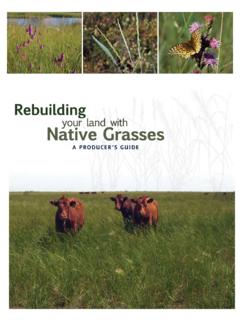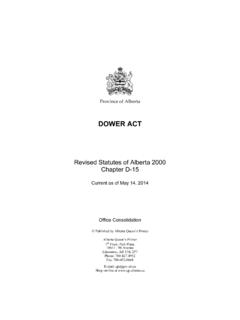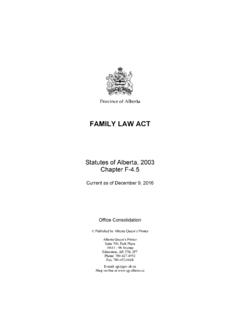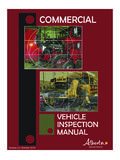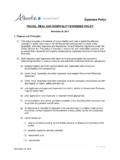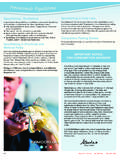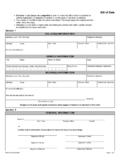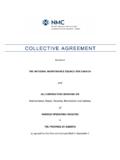Transcription of Rough Fescue - Alberta Prairie Conservation Forum
1 Rough Fescue Rough fescues are perennial bunch grasses (growing in dense tufts) with stiff, narrow leaves (<4mm wide) that are Rough to the touch, and with purplish sheaths at the base of the leaves which persist from year to year even though the leaf blades may fall off. Flowering stems are from 30 cm to 150 cm tall. Flowers are large compared to many other grasses, lack awns and occur at the tips of erect or slightly drooping branches. Three species or subspecies of Rough Fescue occur in Canada and adjacent parts of the USA. Alberta is the only province (or state for that matter) in which all three species occur and their distribution probably reflects the pattern of colonization following deglaciation (10,000 years ago).
2 Plains Rough Fescue (F. hallii (Vasey) Piper) occurs in northern Great Plains Grasslands and parklands from west-central Alberta through central Saskatchewan to southeastern Manitoba and North Dakota. It is a dominant species of grasslands in Alberta s Northern Fescue Grassland and Central Parkland natural subregions. Foothills Rough Fescue (F. campestris Rydb.) occurs in the Cypress Hills and foothills of western Alberta and southeastern British Columbia south to eastern Oregon, Idaho and western Montana. It is a dominant species of grasslands in Alberta s Foothills Fescue Grassland, Foothills Parkland and Rocky Mountain Montane natural subregions.
3 Nothern Rough Fescue (Festuca altaica Trin. ex Ledeb) occurs from the Rocky Mountains of west-central Alberta and east-central Rough Fescue (Festuca sp.) British Columbia north through the Yukon to Alaska and into central Asia. It grows in open woods, moist meadows and dominates ridge-top grasslands in Alberta s Rocky Mountain Subalpine and Alpine natural subregions. The three species are told apart by colour and flower characteristics. Northern Rough Fescue is yellow green to dark green whereas the other two species are grey green in colour. Foothills Rough Fescue are generally bigger plants with larger and more flowers than Plains Rough Fescue .
4 Rough Fescue provides good forage for wildlife and livestock. It has high spring protein and digestible carbohydrate content. Rough Fescue also produces good yields as native hay. Rough Fescue is somewhat unpalatable during spring and summer but is a highly preferred forage for livestock and wildlife during winter months. Unlike many other grasses, plants cure on the stem and hence also provide good quality forage throughout fall and winter. Plains and Foothills Rough Fescue are believed to have evolved under winter grazing by bison. Rough Fescue is considered a climax species which means it is slow growing from seed, but once established it persists.
5 It prefers fertile mostly black soils with ample moisture. On sites that have not had disturbance from fire or grazing for many years Rough Fescue can effectively crowd out other plant species. Conversely, Rough Fescue decreases on sites which are under persistent, heavy grazing pressure or other frequent disturbance. Winter grazing tends to favor the species and is considered a restorative treatment in many situations. In many places it is now replaced by grazing resistant forbs and grasses ( western porcupine grass, awned wheat grass, Parry oatgrass, Idaho Fescue ), non-native species ( smooth brome, Kentucky bluegrass, dandelion) and woody species such as shrubby cinquefoil.
6 Grazing management which provides rest, particularly through part of the growing season, is recommended. Because Rough Fescue grows on fertile black soil, its habitat was preferred for cultivation, hence it is gone from much of its former range in central Alberta , particularly on more level areas. The largest remaining blocks of Plains Rough Fescue grasslands in North America are found near Big Valley (Rumsey Ecological Reserve and Natural Area), in the Hand Hills (Little Fish Lake Ecological Reserve), near Bodo and southeast of Wainwright. In southwestern Alberta , Foothills Rough Fescue grasslands still serve as the principle range for many ranching operations and as critical winter range for elk and bighorn sheep ( Milk River Ridge, Castle, Whaleback/Porcupine Hills, Panther Corners).
7 These also are the most extensive grasslands of their kind in North America. Fragmentation by developments (roads, subdivisions) and invasion by non-native species are the biggest threats. Northern Rough Fescue grasslands in the wildlands of Willmore and Kakwa also are important range for elk and bighorn sheep. Summary Rough Fescue is a beautiful grass, tall and elegant. Alberta is the only jurisdiction in North America where all three types of Rough Fescue occur Plains, Foothills and Northern. Their ranges converge here, reflecting the pattern of recolonization following glaciation (10,000 years ago) as well as the natural diversity of the province - from plains to foothills to mountains.
8 Fescue grasslands are vital range for wildlife and of great significance for the ranching industry. They have been and continue to be threatened by some human activities. A challenge for Albertans as we approach the centennial of our province is to commit to sound stewardship of our remaining Rough Fescue grasslands so that Rough Fescue is a living emblem of our Prairie heritage throughout the next century. Another challenge for the next one hundred years is to learn to restore Rough Fescue to lands where human caused disturbances has resulted in its elimination or significant decline.
9 For more information on Prairie Conservation visit C. Bradley C. Wallis Lorne Fitch Sources: Pavlick and J. Looman. 1984. Taxonomy and nomenclature of routh fescues, Festuca altaica, F. campestris (F. scabrella var. major) and F. hallii, in Canada and the adjacent part of United States. Can. J. Bot. 62: 1739-1749. Tannas, Kathy. 1998. Common Plants of the Western Rangelands (Volume One). Lethbridge Community College.

